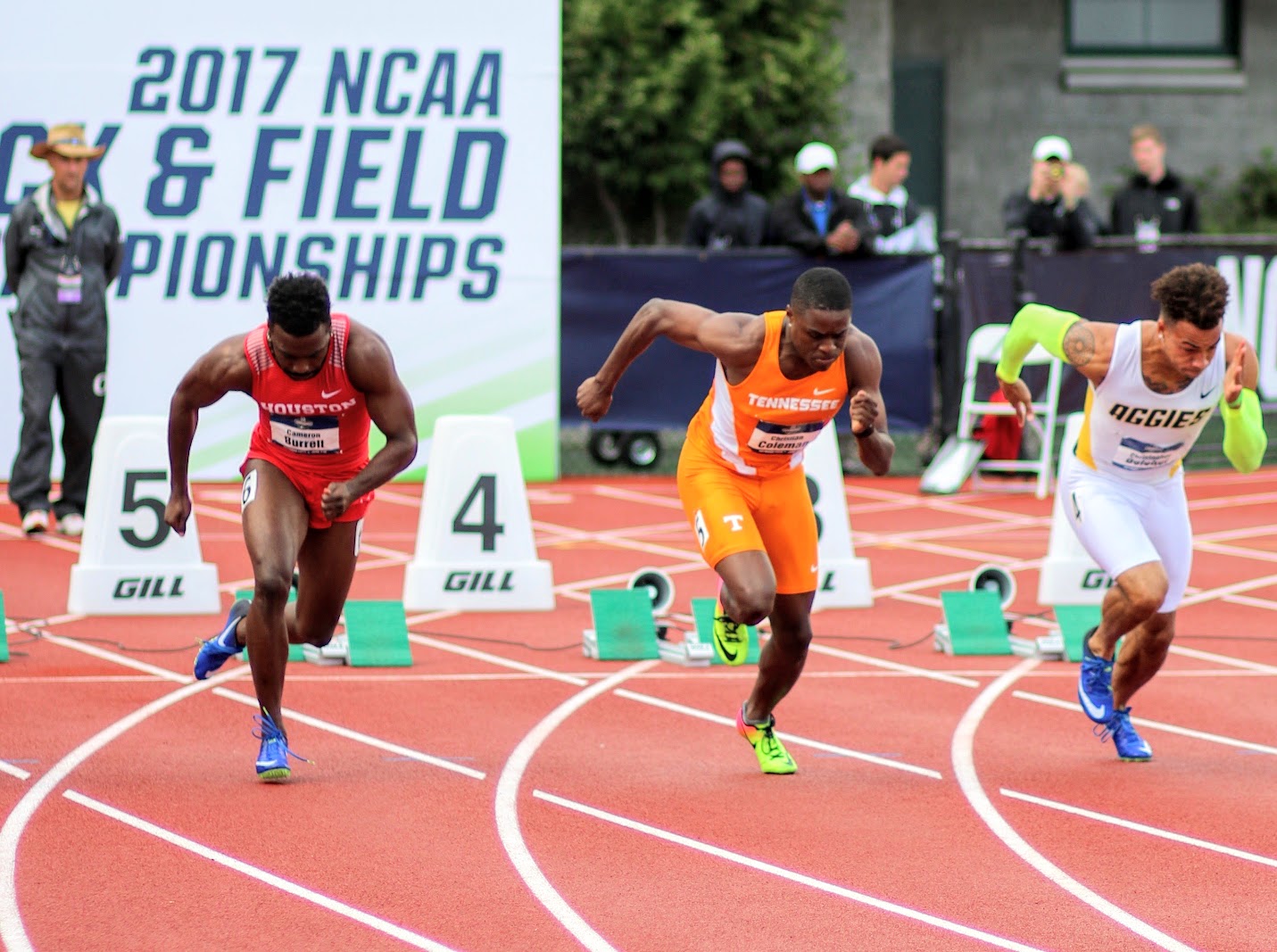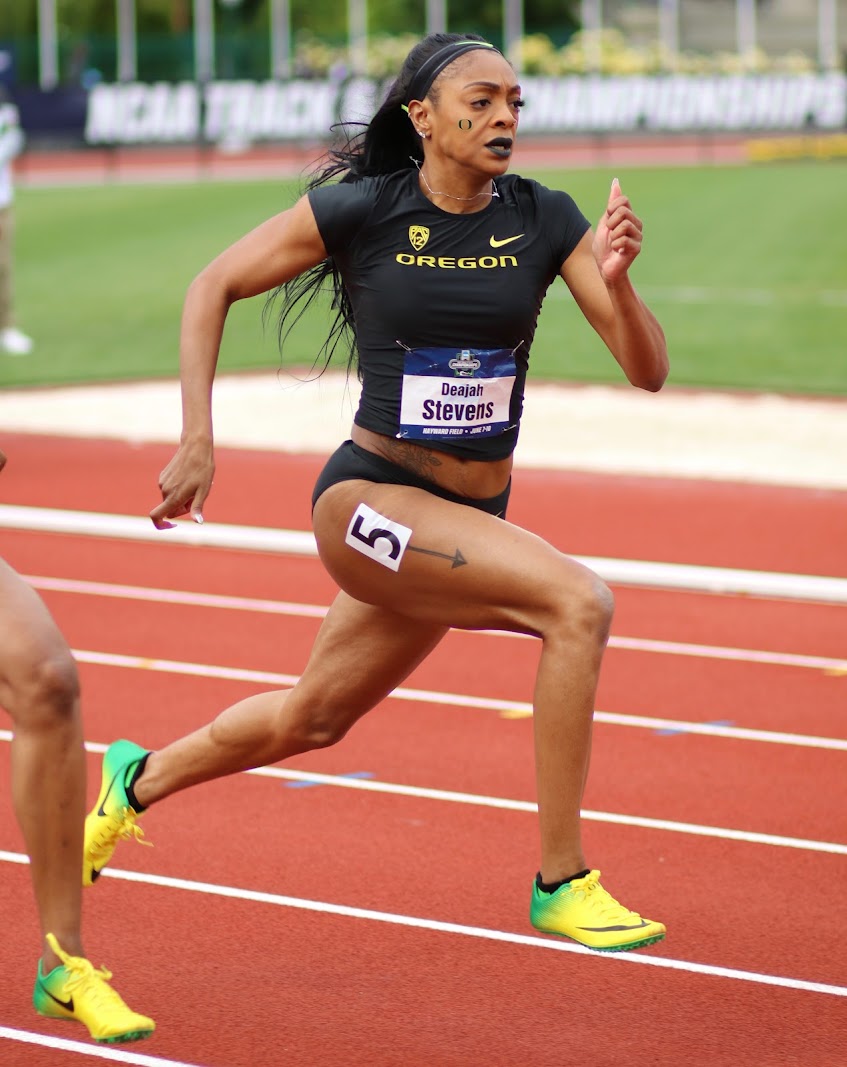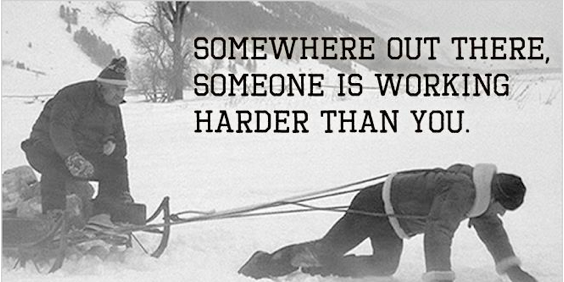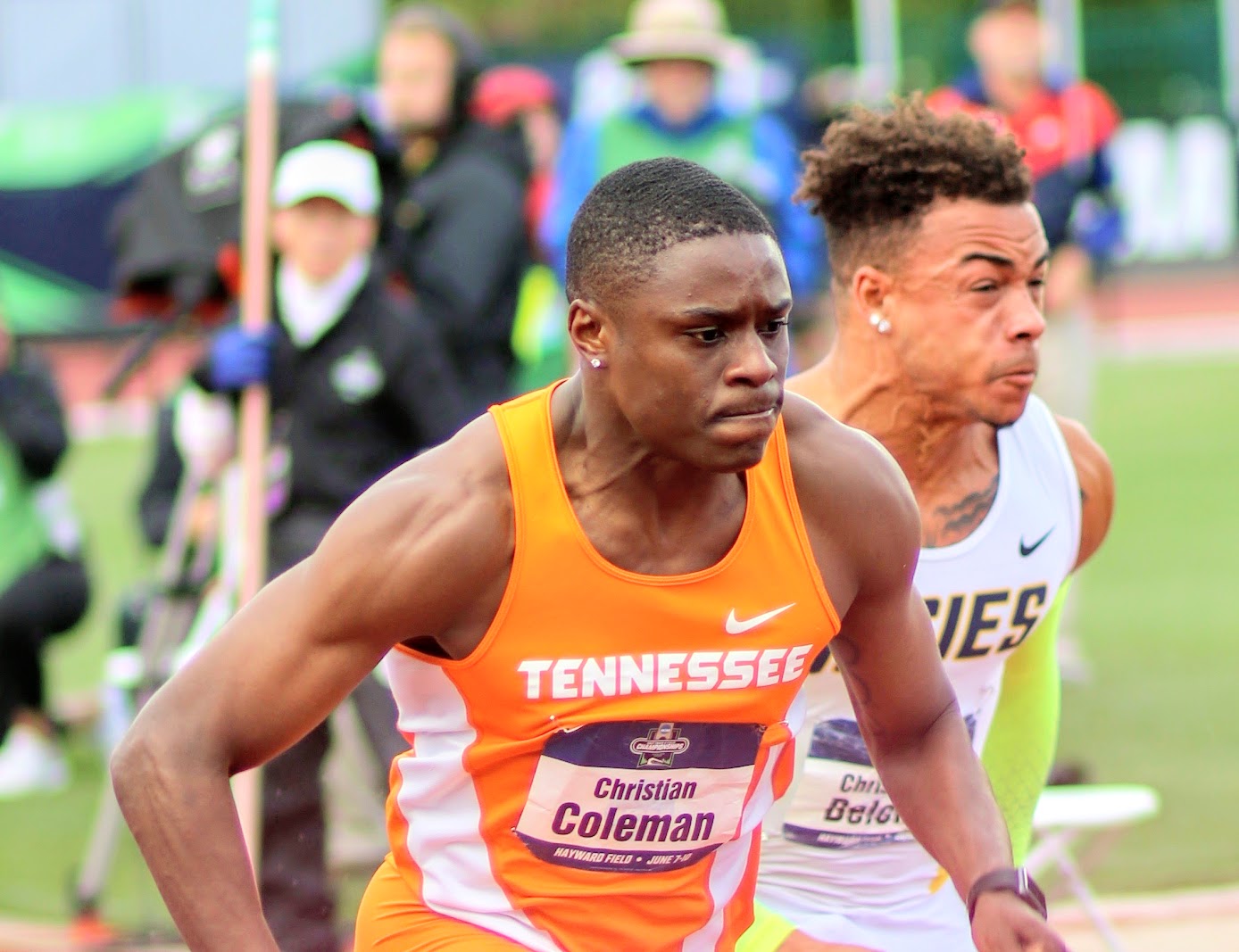
I wrote this article in June of 2017 in the car on the 2,113 mile ride home from the NCAA Championships in Eugene. The article caught the interest of the legendary Michael Boyle who flew me to Boston to speak to his staff and interns. Seven years later, I’m speaking alongside Michael in a free webinar for Les Spellman and the Universal Speed Rating, USR. I thought it would be a good day to republish “Ten Sprint Facts”.
+++
TEN SPRINT FACTS I WISH EVERYONE UNDERSTOOD
I consider myself a coach, a veteran of 36 years (now 43) of coaching football, basketball, and track. Stuart McMillan recently tweeted, “A good coach knows a lot about a little and a little about a lot.” I know a lot about sprinting.
I was tempted to title this article “Shining Light into the Darkness”. My goal is to share ten facts with three groups of people: athletes, parents, and coaches. Despite the fact that speed (moving fast) is central to athleticism, too many people live in the dark.
1. Running is not sprinting. If you stop reading here, you’ve learned something most people don’t understand. Sprinting is something you can do for a short period of time and requires full recovery to repeat. Anything lasting for more than five seconds is working on something other than speed.
Unlike runners, sprinters “get big in the front” and stay “short in the back”. They run with full range of motion in the arms, not like distance runners (T-Rex arms). They also bounce off the ground with ground contact times approaching 0.08 seconds. Running and sprinting are two different things.

I took this picture at the NCAA Track & Field Championships. Deajah Stevens is sprinting, not running.
2. Running does not improve speed. When football coaches encourage their players to run at full-speed over a three-hour practice, they are confused. No one can run at full-speed for three hours. Yes you can try to do your best over a three-hour period but it won’t be “full-speed”. Being too fatigued to sprint, football coaches can only ask for EFFORT. Running is sub-max. Full speed is max-speed. Max-speed is sprinting. Running makes you good at sub-max running. Sprinting improves speed.
3. Weight lifting does not improve speed. Lifting weights will improve strength. That strength may transfer to athleticism but won’t directly improve speed. The strongest kids on a team are seldom the fastest. The typical weight room celebrates indiscriminate hypertrophy (bodybuilding). In my opinion, kids who lift weights get better at lifting weights. Beware of muscle-bound poster boys who live in a weight room. Strength coaches will tell you that great teams are made in the weight room, but remember, when you ask a barber if you need a haircut, he will always say yes.
4. Racehorses are not workhorses. This will offend most coaches but it’s a fact. Horses that plow a field all day can’t win a race. Too many coaches take thoroughbreds and force them to plow fields. If you want a fast team (and who doesn’t?), treat all your horses like race horses. Train them for speed, not work.
5. Sprinting is the most explosive exercise in the world. Nothing in the weight room moves at 10 meters per second. The most explosive lifts may approach 2 m/sec. I’m not telling people not to lift, but sprinting, in and of itself, builds functional strength that directly transfers to athleticism. Extreme speed challenges the CNS which has global effects. Speed is the tide that lifts all boats.
 Last season (2017) I coached the fastest 14 year-old in the nation, Marcellus Moore, #1 IL indoors in the 60m (6.86) and 200m (21.95). #2 IL 100m (10.41), #1 IL 200m (21.28). Marcellus did not get fast by lifting weights or surviving high volume workouts.
Last season (2017) I coached the fastest 14 year-old in the nation, Marcellus Moore, #1 IL indoors in the 60m (6.86) and 200m (21.95). #2 IL 100m (10.41), #1 IL 200m (21.28). Marcellus did not get fast by lifting weights or surviving high volume workouts.
6. Any fool can get another fool tired. Know-nothing coaches often work their kids the hardest. Toughness wins! I believe toughness is just as genetic as speed. Coaches don’t create toughness by designing crushing workouts. Even if hard work created toughness, I would still opt for fast, energetic athletes. Slow and tired athletes lose no matter how tough they are. If you want fast kids, work smarter, not harder. To get faster, you must sprint intensely for five or six seconds and then rest long enough to do it again.
7. We are not the result of what we did yesterday. We are the sum of what we did for the last six weeks, the last six months, and the last six years (my “6-6-6 Theory”). Speed grows like a tree. Stay patient. I’ve timed a quarter-million sprints. I “record, rank, and publish” all measurements. Measure meaningful things to make meaningful things more meaningful. Growth inspires.
8. Speed is a barometer of athleticism. What metric among the best football players in the NCAA is the #1 indicator of future success at the NFL Combine? The 40-yard dash is a measure of both acceleration (strength and explosion) and max-speed. Surprising to some, speed is not only important for running backs and receivers. The fastest big and strong offensive linemen are always drafted highest. The highest drafted 300-pounder will usually be the fastest 300-pounder. The best athletes are the best players.
Slow people complain about the use of the 40 as a metric of football athleticism but the data is strong. Among the best football players entering the NFL, the fastest in the 40-yard dash usually have the best and longest careers (especially with big guys… fast big guys are good football players).
If no one reaches max speed on a basketball court, is sprinting irrelevant for basketball players? Josh Bonhotal, Director of Sports Performance for the Purdue men’s basketball team, believes max-speed sprinting to be the key to basketball athleticism:
“Too often, I see coaches overemphasizing conditioning during the offseason and never developing absolute capacities of strength, power, and speed. In particular, a common mistake is to attack repeat sprint ability when you have never truly developed speed and thus sprint ability itself.”
If most baseball players don’t steal bases, is sprinting irrelevant in baseball? Major league baseball has found itself with a shortage of athleticism. Specialization has created players who are good at hitting and throwing but weak at explosive sprinting. Several major league teams are looking for ways to reverse this trend by making speed a priority in their farm system.
Even endurance sports like cross country, soccer, rugby, and lacrosse are beginning to explore speed training.
How about a non-running non-speed sport like volleyball? Sprinting and jumping use the same fast-twitch muscle fibers. Sprinting and jumping have a reciprocal relationship. Volleyball players jump higher and move quicker as their 10m fly times improve.
9. Beware of “The Grind”. Any coach who embraces “The Grind” is not a speed-based coach. You don’t train a racehorse by grinding unless you want to improve its ability to plow fields. Grinding improves grinding, not speed. Hard work seldom translates to undefeated seasons, but coaches are addicted to slogans and paramilitary thinking. Coaches live in constant fear of getting out-worked. Great athletes and great teams are a combination of smart training, organization, enthusiasm, talent, and luck.

10. Sprinting improves sprinting. No one gets fast by running slow. I never train tired athletes. I never train beaten and battered athletes. Rest, recovery, and enthusiasm are more important than any workout. If I want to train kids two days in a row, I make sure today’s workout does not ruin tomorrow’s workout. Racehorses usually perform well.
Don’t fall prey to muscle-bound Neanderthals and ex-college football players selling hard work and bodybuilding in the absence of speed. Sprinting must be the priority. Don’t plant beans and expect to grow corn.

+++
If you are interested in feedback I got from Michael Boyle’s strength community, check this out… Strength vs Speed.
+++
